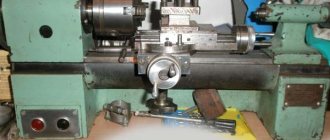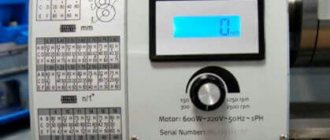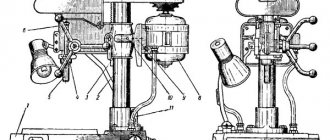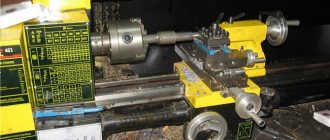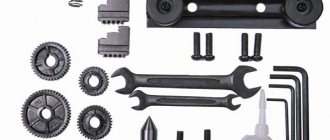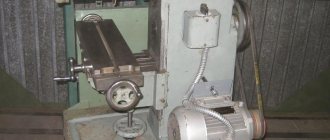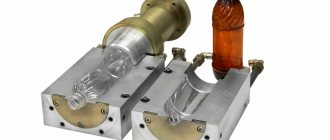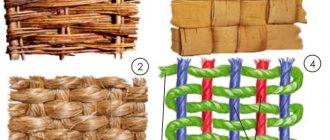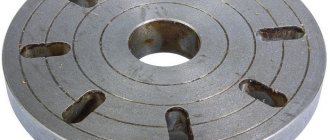However, waterjet and laser cutting techniques do not exclude one another. The main disadvantage of both methods is the presence of a slope of the cutting plane.
The most effective method, combining high performance both in process productivity and in accuracy and surface quality, is laser cutting.
Laser advantages:
— production of parts from thin non-reflective materials (for example, a thin sheet of steel).
— accuracy up to ±25 μm (±0.001), and even higher for thin materials.
Advantages of GAR:
-the ability to process reflective, thick and conductive materials (for example, stainless steel, brass, aluminum, copper, etc.).
— the cutting process occurs without melting, the surface is smooth and uniform.
— absence of a heat-exposed zone, due to this there is no need to carry out secondary operations to remove it.
— no harmful fumes are generated during the cutting process.
— simplicity and speed of programming and configuration in a short cycle.
Thus, enterprises that previously worked with lasers purchase GAR machines, since they are cheaper, and their use makes it possible to process various materials up to 300 mm thick. By purchasing GAR machines, you can independently perform the necessary operations, making production flexible. This increases efficiency and saves money.
Service purpose of the machine, range of processed parts
Waterjet technology is a process of cutting materials using a water jet under high pressure, with the addition of a cutting agent in the form of small particles of hard rock to the water.
Waterjet cutting machines are used in various industries: mechanical engineering, aviation, space, instrumental, shipbuilding and other fields. Water jet cutting technology is highly productive as it processes an unlimited range of materials, including cutting metals and cutting sheet materials: steel, aluminum, copper, granite, glass, carbon fiber and titanium.
The operating principle of a waterjet machine is as follows:
-water, compressed by a high-pressure pump, passes through a nozzle, which forms a jet with a diameter of 0.2-0.35 mm, supplied to the mixing chamber;
- in the mixing chamber, water is mixed, as a rule, with garnet sand, then passes through another carbide nozzle with a diameter of 0.6-1.2 mm;
-then a jet of a mixture of abrasive and water comes out at a speed of approximately 1000 m/sec and hits the surface of the material being processed;
The working process is not accompanied by heating and deformation of the workpiece area being processed.
Design and principle of operation
The machine mixes abrasive particles into a jet of water emitted under high pressure - such a mixture is capable of cutting almost any material.
The WAZER can cut both soft and extremely tough materials with great detail and precision that is impossible to achieve with any manual cutting method.
Factors affecting the quality of waterjet cutting
One of the most important advantages of waterjet technology is the high quality of cutting. With this type of part processing, you can get both a smooth and rough surface, depending on the settings of the cutting modes. The result can be achieved taking into account the following factors:
1.Speed.
If a smoother surface is required, reduce the feed rate. As the cutting speed increases, the depth increases. High speeds are used where surface quality is not so important.
Distances between material and cutting head.
To ensure cutting quality, the distance between the surface being processed and the cutting head must be the same. As the distance increases, a taper appears.
Equipment condition.
It is required to carefully monitor the operation of the machine. The high pressure pump should supply water evenly, without any jolts or delays.
Story
WAZER began as a Kickstarter project with the help of several Penn State alumni.
It didn’t take long for recognition: the device is considered one of the most promising and was awarded, for example, the Make Magazine 2019 Editor’s Choice award.
Machine layout
The waterjet cutting installation is incomparable with any known equipment of this type of product processing
A typical machine consists of the following components:
1) Housings.
2) A bathtub with water installed on adjusting supports. Here is the work table on which the workpiece is mounted.
3) A pump equipped with a plunger system, with the help of which the necessary pressure is created.
4) Container with abrasive. It is replenished with material, even during the operation of the machine.
5) Quick-change ribs that support the material being processed. They are installed on load-bearing supports and protect them from water jets.
6) A system for quickly drawing in and releasing water, allowing you to process workpieces completely immersed in water. The work area is thus protected from the effects of generated dust and noise.
7) LED, which helps to position the cutting head exactly at the beginning of the workpiece.
Advantages
"Weiser" is a relatively compact equipment capable of working with a huge amount of materials, while maintaining cleanliness in the room and operator safety.
Machine guides
The axes move along linear guides, which ensures high positioning accuracy, smooth running and moving speed.
Linear guides are designed to solve problems:
1. Serve as a support for machine components, ensuring that the weight of the transported parts of the machine moves in a straight line.
2. Direct the moving parts of the machine along the desired path with the required accuracy and minimal friction. In general, the accuracy of movements is the main task of guides; their type and characteristics have a great influence on the accuracy and repeatability of the machine.
3. Accepts loads arising during operation. In addition to the weight of the machine components, linear movements receive and transmit to the frame the lateral force generated during processing.
The waterjet machine uses linear ball guides with seals, with a stainless steel carriage. They are characterized by high rigidity and high load capacity in all directions of the acting load. They have the best operating parameters and do not create noise. They have a high load capacity.
Linear ball guides and preloaded bearings are coated with anti-corrosion coating.
The lubrication system is provided with a syringe through external channels.
The guides are completely fixed to the frame along their entire length.
Models and specifications
WAZER
The WAZER Basic Machine is a benchtop CNC waterjet cutting machine that is compact, easy to use and versatile.
- Operating systems Windows, Mac Dimensions, mm Main module: 856 x 648 x 551; pump: 533 x 355 x 280
- Weight, kg Main module: 50; pump: 42
- Working field size 300 x 460 mm
Delivery conditions
- Price 1,187,922
Order Get a consultation
WAZER STANDUP
Wazer STANDUP is a floor-standing CNC waterjet cutting machine that does not require a workbench - it is equipped with a floor stand with a shelf, which immediately eliminates the issue of placing the machine itself, the pumping station, which can be placed down (as in the photo), and the material for cutting — the shelf has dividers for easy storage of sheet blanks.
- Power supply Machine: 100-240 V, 50/60 Hz, 2.5A; Pump: 220-240 V; 50 Hz; 10A; 2200 W Dimensions, mm Main module with rack: 856 x 648 x 1220; pump: 533 x 355 x 280
- Weight, kg Main module: 50; pump: 42 File formats DFX, SVG
- Working field size 300 x 460 mm
Delivery conditions
- Price 1,336,431
Order Get a consultation
Support system
The supporting system is designed to create the required placement of units carrying a tool or part and ensure the accuracy of their relative position under load.
The main requirement is the ability to maintain the position of the base surfaces for a long time.
The supporting system includes:
1. Machine bed.
It is the most important body part, since it contains various moving and fixed components. The design must ensure rational placement of components and manufacturability. Made from a complex I-beam steel profile with heat-treated stiffeners to ensure maximum structural strength and rigidity.
The bed is additionally processed on a milling machine in one installation on the machine.
2. Moving portal.
It is a welded structure made of a heavy durable steel profile with stiffening ribs. The portal structure is subjected to thermal stabilization and aging to relieve internal stress. To achieve the minimum deflection of the portal, a calculation method with finite element analysis is used, which eliminates the “slip effect” (which leads to uncontrolled displacement of the portal). The portal supports are made of thick steel plates cut using waterjet cutting.
The increased distance between the X-axis bearings and the presence of heavy plates help absorb vibrations and provide reliable support for the gantry profile.
A distinctive feature of the waterjet cutting installation is the hinge-hinged design of the mobile portal, which ensures high precision of movements and eliminates the possibility of damage to the machine in the event of accidental impacts of the portal, for example, when loading a sheet onto the installation table or in case of emergency cutting of the nozzle into the surface being processed, which can be caused by operator error . The design of the portal also prevents the possibility of the portal jamming during thermal deformation.
Areas of use
Rocketry and aircraft manufacturing - where carbon fiber processing of titanium alloys and high-temperature alloys is required. All areas of construction. Waterjet machines are used to cut reinforced concrete slabs, stones, hard floor clay and porcelain tiles; for creating mosaics, unique panels, inlays from natural granite and marble. Regular and figured cutting of stones of natural and artificial origin.
Cutting glass - reinforced, composite and plexiglass. Woodworking - structural or artistic cutting of hard wood (for example, oak), chipboard panels or laminite. Cutting various plastics - creating complex shapes and components. Tool production – production of parts requiring high precision for machine tools and production equipment. Food and light industry - cutting frozen briquettes and elastic materials can be done only with water and without abrasive materials.
